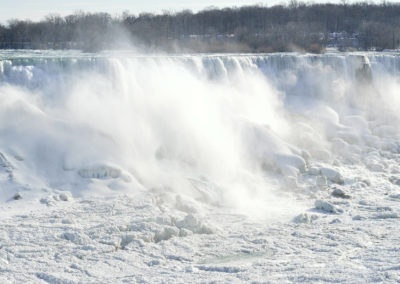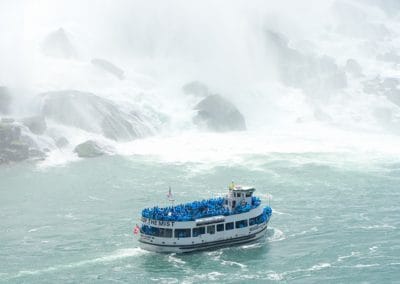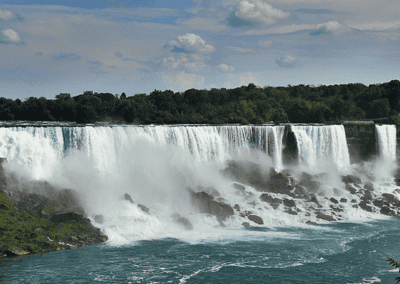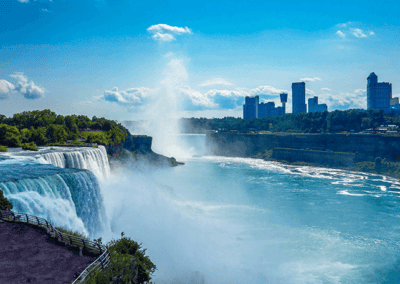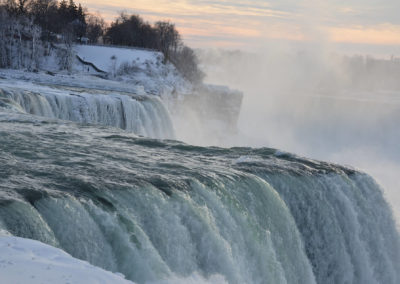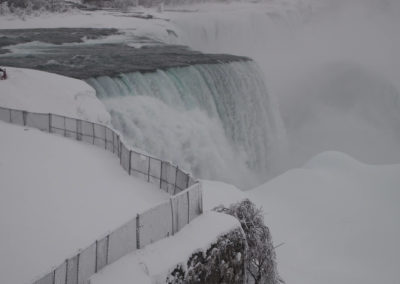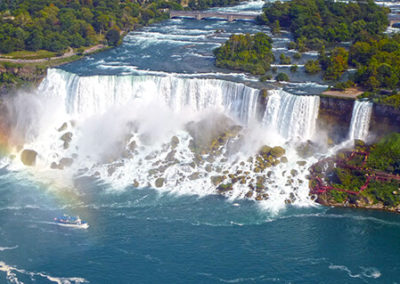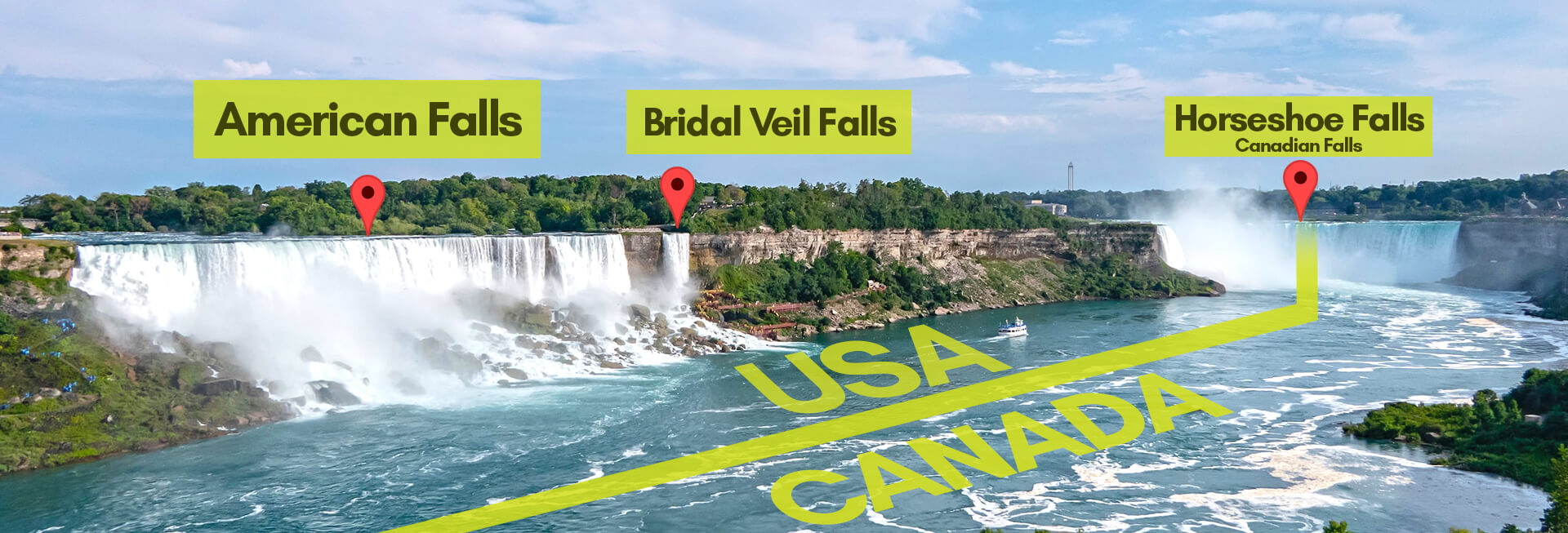
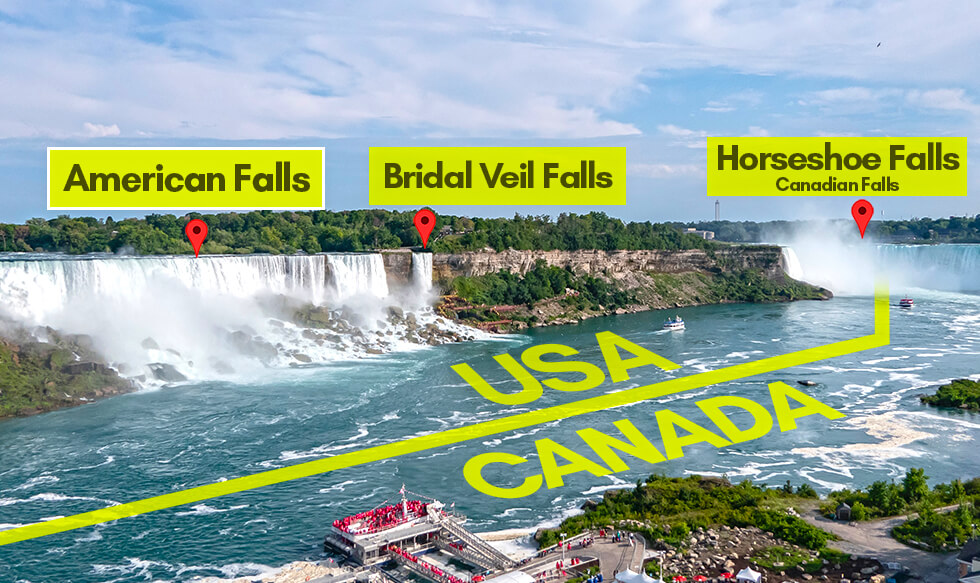
American Falls – Waterfall, Niagara, NY, USA
Table of Contents
Niagara Falls is undoubtedly one of the most awe-inspiring natural wonders in the world. Among its three magnificent waterfalls, the American Falls stands proudly on the United States side of the border. With its distinct characteristics and captivating beauty, the American Falls offers visitors a unique perspective of this iconic landmark. In this article, we will delve into the fascinating details of the American Falls, exploring its size, shape, flow rate, and notable features.
An interesting historical fact is that in 1969 the flow of the waterfall was stopped for a couple of months so that geologists could study the effect of erosion and how it will affect the future survival of the waterfall.
Regardless of the season in which you visit Niagara Falls, there is always something to see. During the warmer months, all attractions are open. In the winter months, you can enjoy the view of the so-called “frozen waterfalls” and the huge pieces of ice floating on the Niagara River.
Picture of American Falls
Characteristics of the American Falls
The American Falls, situated entirely within the United States, is the second largest of the three waterfalls that collectively make up Niagara Falls. Unlike its larger counterpart, the Horseshoe Falls, which spans across Ontario, Canada, and New York, USA, the American Falls resides solely within the United States. The falls receive approximately 11% of the water flow from the mighty Niagara River, with the majority cascading over the Horseshoe Falls, separated by the picturesque Goat Island.
The American Falls boasts a straight-line crest width of about 830 feet (250 m), while the jagged lip of the falls extends approximately 950 feet (290 m) in length. The torrent of water gracefully passes over the crest, with a depth of about 2 feet (0.61 m). The height of the American Falls ranges between 70 and 110 feet (21-34 m), measured from the top of the falls to the top of the rock pile, known as talus. From the top of the falls to the river, the height measures an impressive 188 feet (57 m).
Visitors have the opportunity to admire the American Falls from various vantage points. On the American side, one can approach within a few meters of the edge of the falls, offering a thrilling and up-close experience. Additionally, viewpoints on Goat Island and Luna Island, accessible via a pedestrian bridge across the Niagara River’s rapids, provide breathtaking views. For a head-on perspective, the Canadian side in Niagara Falls, Ontario, offers a magnificent panorama of the falls.
Fascinating Facts about the American Falls
Here are some captivating facts that highlight the uniqueness of the American Falls:
- Height: The American Falls stands at an impressive height of 180 feet (56 meters), captivating visitors with its sheer drop into the Niagara River.
- Crestline Width: The width of the American Falls’ crestline stretches approximately 1,075 feet (328 meters), providing a wide expanse for the water to cascade over.
- Water Flow: Despite being smaller than the Horseshoe Falls, the American Falls boasts an estimated water flow of 75,000 gallons per second, showcasing its remarkable power.
- Notable Rock Fall: In 1954, a significant rockfall occurred north of Prospect Point, resulting in a visible change to the landscape of the falls
Formation and Evolution of the American Falls
Over the past centuries, the American Falls has undergone a remarkable transformation, shaped by the forces of nature. The ledge of the falls exhibits a modified “W” form, resulting from numerous rock falls that have occurred over the last 150 years. These rock falls have contributed to the formation of a massive mound of rock at the base of the falls. One notable rockfall event took place in 1954, leading to the collapse of Prospect Point Observation Tower to the north.
In 1969, the United States Army Corps of Engineers took a bold step to study the rockfall phenomenon and devise erosion control measures. They temporarily diverted the flow of water over the American Falls from June to November of that year. This unprecedented move allowed scientists to survey the rockfall and assess the amount of rock accumulated at the base of the falls. The news of the dried-off cataract attracted significant attention, resulting in both an increase and decrease in tourist attendance, as some believed both the American and Horseshoe Falls had been dewatered. Ultimately, by December 1969, water resumed flowing over the American Falls. In the mid-1970s, it was decided to let nature take its course, refraining from making alterations to the rockwall.
FAQs
What is the American Falls?
The American Falls is one of three waterfalls that together form Niagara Falls on the Niagara River along the Canada-US border. It is situated entirely within the United States, in the State of New York.
How big is the American Falls?
The American Falls is approximately 830 feet (253 meters) wide and 110 feet (34 meters) high. The depth of the water at the base is estimated to be 184 feet (56 meters).
How does the American Falls compare to the other Niagara Falls?
Niagara Falls consists of three waterfalls: The Horseshoe Falls, the American Falls, and the Bridal Veil Falls. Horseshoe Falls, which is the largest, lies mostly on the Canadian side, while the smaller American Falls and Bridal Veil Falls are entirely within the U.S.
What is the flow rate of the American Falls?
The average flow rate of the American Falls is around 150,000 gallons (567,811 liters) per second.
What's the difference between the American Falls and Bridal Veil Falls?
The American Falls and Bridal Veil Falls are physically separated by Luna Island. While they are often collectively referred to as the "American Falls", they are technically two separate falls. The Bridal Veil Falls is the smallest of the three Niagara Falls.
Has the American Falls ever frozen completely?
While it might appear that the American Falls freeze in the winter, this isn't entirely true. The flow of water never stops but can decrease due to ice blockages at the river's mouth. When temperatures drop significantly, the spray and mist from the falls can freeze, creating a stunning ice formation around the falls.

